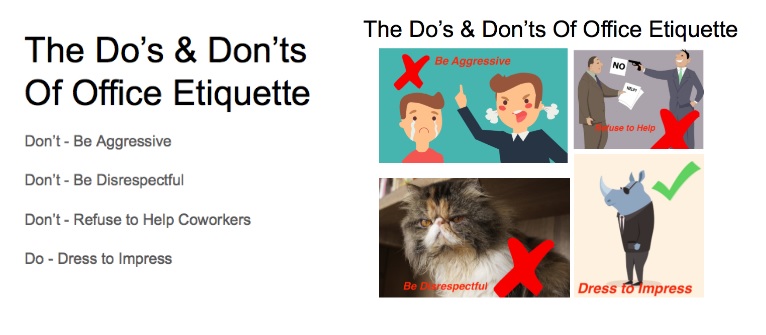The use of audio-visual solutions is widespread across all education platforms. Whether it is within schools, universities or workplace training schemes, audio-visual tech is often found at the centre of the educational process.
The reasoning behind such heavy use of the equipment is simple: the majority of people are visual learners — 65% of us, in fact. This means that they take in and retain information better if it is presented through visualisation. Those that aren’t visual learners are often auditory learners. Only a small percentage of people are better suited to learning through action.
Audio and visual learning is also absorbed by the brain differently, meaning a two-pronged approach is much more likely to stick the landing. The greater level of sensory information also increases the opportunity for engagement and, therefore, enrichment.
However, whilst you might find that audio-visual technology is widespread, you’ll also find that it is often not used effectively. When utilised properly, audio-visual equipment offers the ultimate method of education. When this isn’t the case — when the medium is poorly utilised — you’ll find the effects are far less than optimal. So what mistakes are being made when it comes to audio-visual technology? And how do we avoid them?
Mistake #1: An Inability to Operate the Technology
Audio-visual solutions come in all sorts of shapes and sizes. It can be as simplistic as Microsoft PowerPoint, or as advanced as Netcom 92’s Clevertouch display screens. However, no matter what technology you are using, you must be able to actually operate it.
Have you ever had a negative experience while teaching with, or being taught through, audio-visual technology? Examples of common occurrences are:
- Media won’t load
- The software won’t open
- Video and/or audio feed isn’t working properly
- Outbound links refuse to work
- Text isn’t displayed properly
- Issues accessing or finding files
The list of potential problems goes on and on. Users are quick to place the blame firmly on the technology, but that isn’t where the fault lies. Too often, people engaging with audio-visual technology fail to invest enough time in understanding how it works. They simply learn the basics, which is little help when faced with a technical problem.
Problems like these can be more than just annoyances, though. Besides slowing the process down, costing time and potentially money, these issues can also result in the loss of information, inaccessible due to the technical problems. Educators can only then provide part of the knowledge they hoped to — which is far from ideal.
Mistake #2: Using Outdated Audio-Visual Solutions
The use of audio-visual techniques has been around for countless years. However, its form is always changing. More recently, before the advent of touchscreens, computers and interactive whiteboard technology, you’d find audio-visual education solutions in the form of old-fashioned whiteboards and blackboards.
Despite the advances in technology, though, some still opt for the old-fashioned approach. These methods are not only behind the times but also lack some seriously important benefits:
They aren’t adaptive or versatile: Audio-visual solutions of the modern era allow for editing and changing simply. This allows them to be re-used in the future or adapted to fit trends or changes. You also cannot input text, images, video or sound into a whiteboard presentation, which are important when it comes to improving engagement.
They aren’t easily shared: The internet allows us to share our audio-visual educational solutions across the globe and still provide the same level of effectiveness. A hand-drawn whiteboard isn’t as flexible in this regard.
They aren’t interactive: Audio-visual solutions such as our Clevertouch displays provide new levels of interactivity, allowing those being educated to get involved and for educators to move the direction of learning, depending on how the session is going.
They aren’t time efficient: To create a whiteboard presentation takes a long time and requires constant changing during the educational session. Modern iterations of the technique allow for prior creation and don’t require educators to wipe clean and start again once one subject has been covered.
These are just a few examples of how old-fashioned audio-visual solutions are inferior to modern tech. There are plenty of other ways in which new technology surpasses the old pen and paper scenario.
Mistake #3: A Failure to Utilise Engaging Aspects of the Technology
We’ve all experienced boring audio-visual learning. The presentation that is just text with words being spoken over the top. This is, unfortunately, what most audio-visual technology is used for.
However, this type of education — while arguably audio-visual — does not employ the most powerful tools at the educator’s fingertips, and is therefore not using the technology effectively.
The trick to getting your message across is not only being clear but also engaging your audience. If an audience is not engaged, they aren’t learning. Text on a screen with spoken words over the top might be clear, but it is worthless if it isn’t engaging the people you are trying to educate. And boredom does not inspire engagement.
Learning through audio-visual solutions, however, can be so much more.
Audio-visual technology now allows for numerous opportunities to increase the engagement factor when it comes to educating. It couldn’t be simpler to include videos, images, sound bites, websites, animations and other media elements into your educational process. A survey from MyCustomer found that videos were over 50% more engaging than simple text-based content. While this survey was conducted for marketing purposes, the psychology of it is very much transferable.
Including emotive, interesting, funny, striking and informative visuals and audio can greatly boost engagement and, therefore, the effectiveness of the education. Engagement boosts memory retention, meaning more people will come away from the session better informed; the ultimate goal.
Consider the examples below. Which of these is more memorable and engaging?




